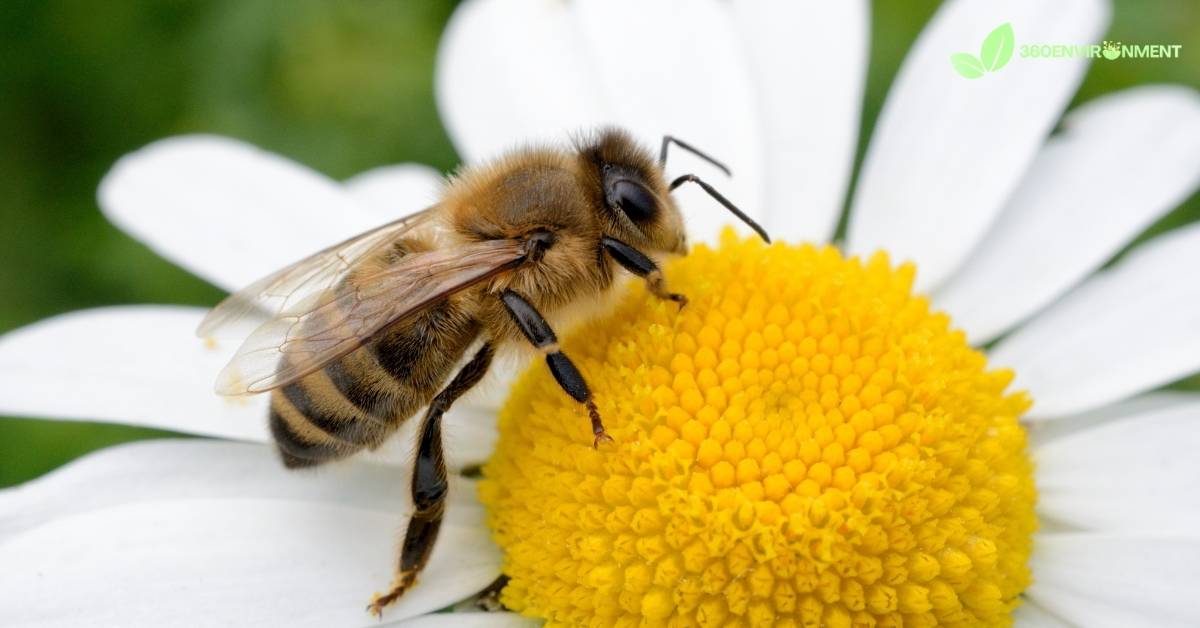Yellow bees are some of the most recognizable and essential pollinators in natural and agricultural ecosystems. Their distinctive yellow and black coloration, often associated with honey bees or bumblebees, not only makes them visually striking but also plays a vital role in signaling their presence to both predators and other organisms in their environment. Bees are key players in maintaining biodiversity and ensuring the reproduction of many flowering plants, thus supporting food webs and ecosystems worldwide.
In this article, we will explore the environmental niche of yellow bees, examining their habitat preferences, feeding behaviors, ecological interactions, and their critical role as pollinators. Additionally, we will look at how yellow bees contribute to ecosystem health and how human activities like habitat destruction and pesticide use threaten their survival. Understanding the ecological importance of yellow bees can help guide efforts to protect and conserve these invaluable insects.
1. Habitat and Geographic Distribution of Yellow Bees
Yellow bees, like most bee species, are found in a wide range of habitats across the world. Their distribution is global, with the exception of Antarctica. These bees have evolved to thrive in various environments, from tropical forests to temperate grasslands, deserts, and urban gardens. While their yellow and black coloration is shared by many species, the ecological roles and behaviors of these bees vary depending on the species and the environment they inhabit.
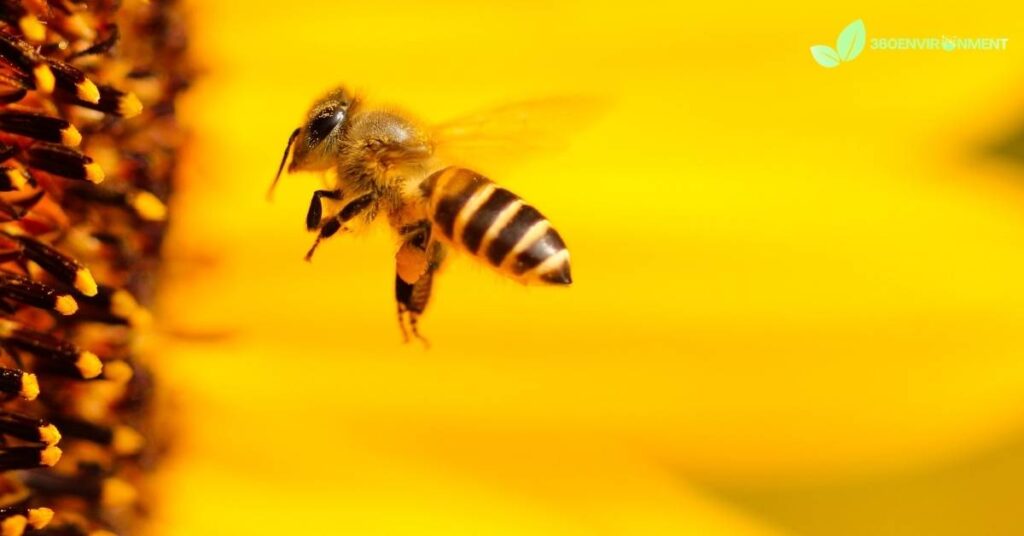
1.1. Temperate Forests and Meadows
In temperate regions, yellow bees are often found in forests, meadows, and grasslands where flowering plants are abundant. These environments provide a wealth of nectar and pollen sources, as well as nesting sites for solitary and social bees.
- Western Honey Bee (Apis mellifera): The Western honey bee is perhaps the most well-known yellow bee species and is found in temperate regions around the world. It is a social species that lives in colonies and plays a crucial role in pollinating a wide variety of crops and wild plants. Honey bees are typically found in agricultural landscapes, forests, gardens, and meadows.
- Bumblebee (Bombus spp.): Bumblebees are large, fuzzy yellow and black bees that are also common in temperate habitats. They are found in woodlands, grasslands, and gardens, where they feed on nectar and collect pollen to feed their larvae. Bumblebees are excellent pollinators, particularly in cooler climates where other bees may not be as active.
1.2. Tropical Rainforests
In tropical rainforests, yellow bees are part of the intricate web of biodiversity. These regions, known for their vast plant diversity, provide year-round flowering plants, making them ideal habitats for bees that rely on constant nectar and pollen availability.
- Orchid Bee (Euglossa spp.): Orchid bees, found in the rainforests of Central and South America, are brightly colored bees that often display iridescent hues, including shades of yellow. These bees are important pollinators of orchids and other tropical plants. Unlike social honey bees, orchid bees are solitary and use their long tongues to extract nectar from deep-throated flowers.
- Stingless Bees (Meliponini): Stingless bees are native to tropical and subtropical regions and are known for their yellow and black coloration. These social bees build their colonies in hollow trees or underground and play a vital role in pollinating a wide variety of tropical plants, including fruits, vegetables, and medicinal plants.
1.3. Deserts and Arid Regions
Yellow bees are also adapted to survive in harsher environments like deserts and arid regions. These bees have evolved strategies to cope with extreme temperatures and the limited availability of flowers and water.
- Cactus Bee (Diadasia spp.): Cactus bees are solitary bees that are primarily found in desert regions of North America. As their name suggests, these bees specialize in pollinating cacti, particularly species like prickly pear. Their bright yellow and black coloration helps them blend in with desert flowers, and they are active during the cactus bloom period.
- Sweat Bees (Halictidae): Sweat bees are small bees that are found in a variety of environments, including deserts. Some species of sweat bees have metallic yellow-green or black and yellow stripes. These bees are solitary or semi-social and are important pollinators of both wild plants and crops, especially in arid regions where they help ensure pollination during brief flowering seasons.
1.4. Urban Gardens and Agricultural Landscapes
In urban areas and agricultural landscapes, yellow bees have adapted to human-modified environments. Gardens, parks, and farms provide critical habitats for bees, especially as natural habitats become increasingly fragmented due to urbanization and agriculture.
- Yellow-Faced Bees (Hylaeus spp.): Yellow-faced bees are small, solitary bees with distinctive yellow markings on their faces. They are commonly found in urban gardens and parks, where they pollinate flowers. Unlike many other bees, yellow-faced bees carry pollen internally rather than on their bodies, making them unique among pollinators.
- Mason Bees (Osmia spp.): Mason bees are solitary bees that are often black with yellow markings. They are efficient pollinators and are increasingly used in agricultural landscapes for pollinating fruit trees and other crops. Mason bees nest in hollow stems or holes in wood, making them ideal for bee hotels in urban gardens.
2. Adaptations of Yellow Bees
Yellow bees have evolved a wide range of physical and behavioral adaptations that allow them to thrive in diverse habitats. These adaptations include their specialized feeding structures, nesting behaviors, and protective coloration. By understanding these adaptations, we can gain insight into how yellow bees have become some of the most successful pollinators in the world.
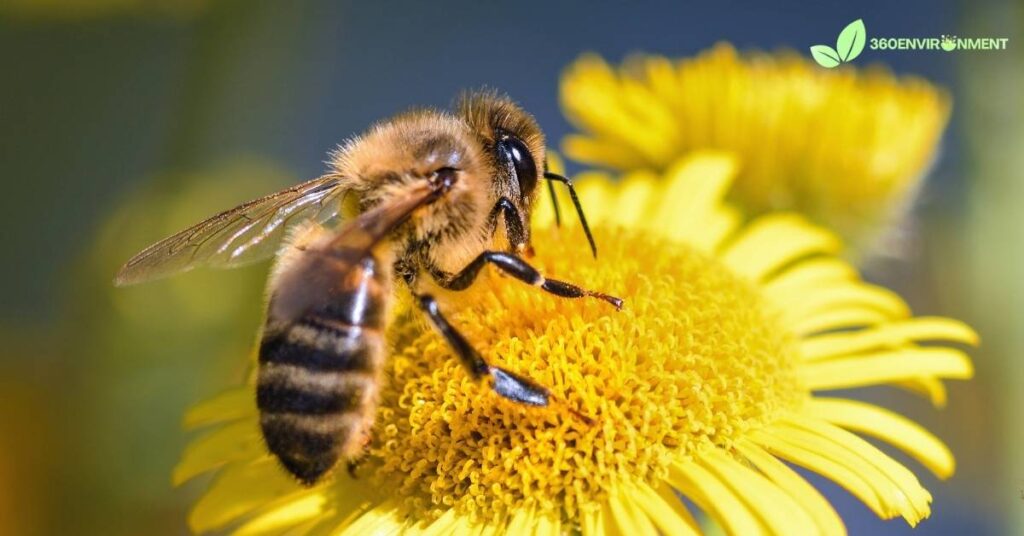
2.1. Coloration and Defense Mechanisms
The bright yellow and black coloration seen in many bee species is not just for aesthetic purposes. This coloration plays an important role in communication, both within the species and as a defense mechanism against predators.
- Aposematic Coloration: Many yellow bees display aposematic coloration, which serves as a warning signal to potential predators. The bright yellow and black stripes are a visual cue that the bee is capable of stinging, deterring predators such as birds, mammals, and reptiles from attacking them. This adaptation helps reduce predation and allows bees to forage without constantly being harassed.
- Mimicry: Some non-stinging insects, like certain flies and moths, have evolved to mimic the yellow and black coloration of bees. This form of Batesian mimicry allows these harmless insects to avoid predation by resembling bees, which are known for their ability to sting.
2.2. Specialized Mouthparts for Pollination
Bees are known for their highly specialized mouthparts, which allow them to feed on nectar and collect pollen from flowers. Different species of yellow bees have evolved specific adaptations that enable them to access nectar from a wide variety of flower shapes and sizes.
- Long Proboscis for Deep Flowers: Bees like the orchid bee have long proboscises that allow them to reach nectar deep within flowers, such as orchids. This adaptation is crucial in ecosystems where flowers have evolved long, tubular structures to protect their nectar from less specialized pollinators.
- Pollen Baskets (Corbiculae): Social bees like honey bees and bumblebees have evolved specialized structures called corbiculae, or pollen baskets, on their hind legs. These baskets allow bees to efficiently collect and transport pollen back to their nests. Pollen is an essential source of protein for bee larvae and is used to feed the colony.
2.3. Nesting Behaviors and Life Cycle Adaptations
Different species of yellow bees have adapted various nesting behaviors to suit their environments. These behaviors range from the complex social structures of honey bees and bumblebees to the solitary nesting habits of mason bees and sweat bees.
- Social Bees: Honey bees and bumblebees are highly social, living in large colonies with a complex division of labor. Worker bees gather food, care for the young, and defend the nest, while the queen lays eggs. These colonies are able to survive harsh winters by storing honey, making them well-adapted to temperate environments.
- Solitary Bees: Many yellow bees, including mason bees and leafcutter bees, are solitary. These bees do not live in colonies but instead build individual nests, often in hollow stems, wood, or underground burrows. Solitary bees are generally more docile and do not sting unless provoked, making them valuable pollinators in urban and agricultural landscapes.
3. Ecological Role of Yellow Bees
Yellow bees play an essential role in ecosystems as pollinators, helping to ensure the reproduction of many flowering plants. Their activities support biodiversity, influence plant community dynamics, and contribute to the health of ecosystems. Without bees, many plant species, including crops and wildflowers, would struggle to reproduce, leading to cascading effects throughout food webs.
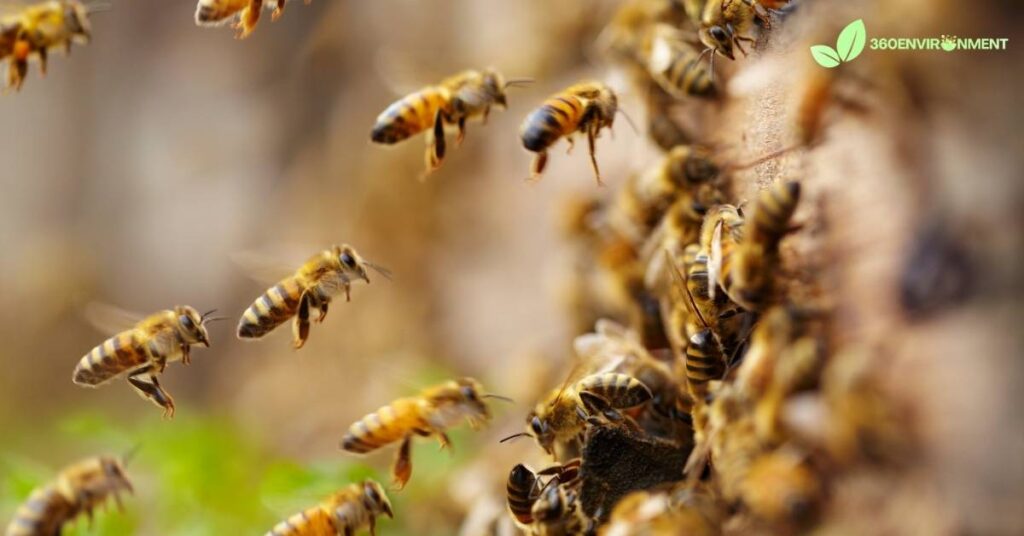
3.1. Pollination and Plant Reproduction
Pollination is one of the most critical services provided by yellow bees. As bees visit flowers to feed on nectar, they inadvertently transfer pollen from one flower to another, facilitating the process of fertilization and seed production. This service is essential for both natural ecosystems and agricultural systems.
- Cross-Pollination: Yellow bees are particularly effective at cross-pollination, the process of transferring pollen between different plants of the same species. Cross-pollination increases genetic diversity in plant populations, helping plants adapt to changing environmental conditions and resist diseases.
- Pollination of Crops: Many important agricultural crops, including fruits, vegetables, and nuts, depend on bee pollination. Yellow bees, such as honey bees and bumblebees, are responsible for pollinating crops like apples, almonds, blueberries, and tomatoes. Without bees, the yields of these crops would be significantly reduced, leading to food shortages and economic losses.
3.2. Influence on Plant Community Dynamics
By pollinating specific plants, yellow bees can influence the composition and diversity of plant communities. The presence or absence of certain bee species can have a direct impact on which plants thrive in a given ecosystem.
- Specialist Pollinators: Some yellow bees are specialist pollinators, meaning they only visit a specific type of flower. For example, cactus bees specialize in pollinating cactus flowers, while orchid bees are essential for pollinating certain species of orchids. The loss of these bees could lead to the decline of their host plants, disrupting the balance of plant communities.
- Generalist Pollinators: Other yellow bees, like honey bees and bumblebees, are generalist pollinators, meaning they visit a wide variety of flowers. These bees help maintain the overall diversity of plant communities by ensuring that multiple species of plants are pollinated.
3.3. Food Web Contributions
Yellow bees are an integral part of food webs, serving as both pollinators and prey. They support the diets of many organisms, including birds, mammals, and insects, while also depending on plants for their own survival.
- Prey for Other Species: Bees, including yellow bees, are a food source for many predators, such as birds (e.g., bee-eaters), spiders, and wasps. While the bees’ ability to sting can deter some predators, many species have evolved to specifically target bees, contributing to the complexity of food webs.
- Role in Supporting Herbivores: By pollinating plants, bees indirectly support herbivores, which feed on the fruits, seeds, and leaves of the plants. The production of seeds and fruits, facilitated by bee pollination, helps sustain populations of herbivorous animals in ecosystems ranging from forests to grasslands.
4. Conservation of Yellow Bees
Despite their ecological importance, yellow bees face numerous threats that have led to declines in their populations. Habitat loss, pesticide use, climate change, and disease are some of the most significant challenges bees face today. Conservation efforts are essential for protecting yellow bees and ensuring that they can continue to provide critical ecosystem services.
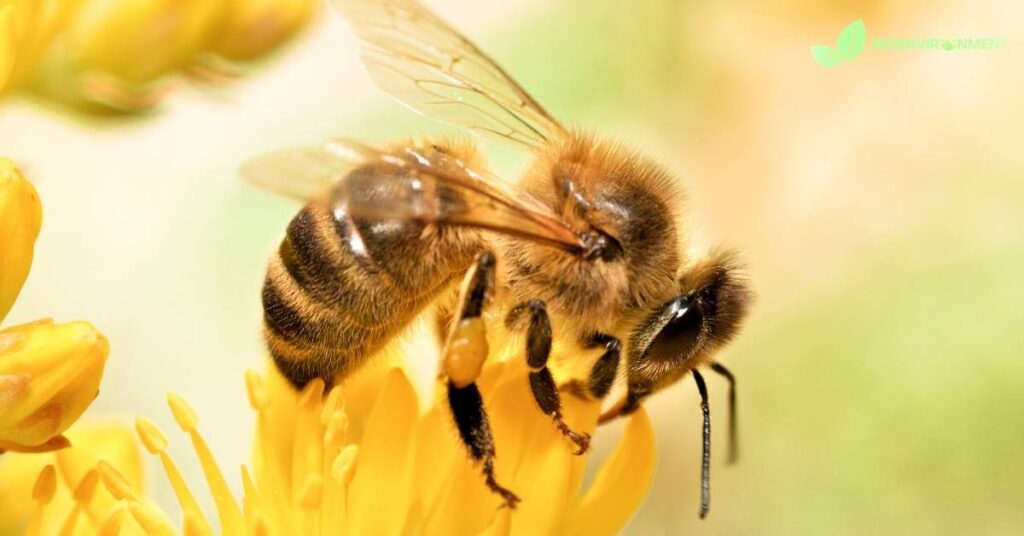
4.1. Habitat Loss and Fragmentation
One of the most significant threats to yellow bees is habitat loss, particularly the destruction of natural landscapes due to agriculture, urbanization, and industrial development. As bees lose access to their natural habitats, they struggle to find food and nesting sites, leading to population declines.
- Agricultural Expansion: The conversion of natural habitats into monoculture crops has reduced the availability of diverse flowering plants that bees need for food. In many agricultural landscapes, the overuse of pesticides and the lack of habitat diversity have made it difficult for bees to survive.
- Urbanization and Fragmentation: As cities expand, the natural habitats of bees become increasingly fragmented. This fragmentation isolates bee populations, making it difficult for them to find food and mates. Green spaces, such as parks and urban gardens, can provide critical habitats for bees in cities, but these areas must be managed with pollinators in mind.
4.2. Pesticides and Chemical Pollution
Pesticide use is one of the leading causes of bee population declines. Many pesticides, especially neonicotinoids, are harmful to bees, affecting their ability to forage, reproduce, and navigate.
- Neonicotinoids: Neonicotinoid pesticides are particularly harmful to yellow bees, as they affect the central nervous system of insects. Even at sub-lethal levels, neonicotinoids can impair a bee’s ability to find food, communicate with other bees, and return to its hive. Banning or reducing the use of neonicotinoids is a key strategy for protecting bees.
- Integrated Pest Management (IPM): IPM practices, which focus on reducing pesticide use by relying on natural predators and other non-chemical methods of pest control, can help protect bee populations. Farmers and gardeners who adopt IPM practices can reduce their reliance on harmful chemicals, creating a more bee-friendly environment.
4.3. Climate Change and Its Effects on Yellow Bees
Climate change poses a growing threat to yellow bees, as changes in temperature and precipitation patterns can disrupt the availability of flowers and alter bee behavior. Some bee species may be forced to migrate to new areas, while others may face population declines if they cannot adapt to changing conditions.
- Phenological Mismatches: One of the most significant impacts of climate change on bees is the disruption of timing between flower blooming and bee emergence. If flowers bloom earlier or later than usual due to changing temperatures, bees may emerge when their food sources are not available, leading to starvation and reduced reproduction.
- Range Shifts: As temperatures rise, some bee species are shifting their ranges to higher elevations or latitudes. While this allows bees to escape warmer conditions, it also means that they must find new habitats that provide suitable food and nesting sites. The fragmentation of natural habitats due to human activities makes it difficult for bees to successfully migrate to new areas.
5. Promoting Yellow Bee Conservation
Conserving yellow bees requires a multi-faceted approach that addresses habitat restoration, the reduction of pesticide use, and public awareness. By creating pollinator-friendly environments and supporting conservation initiatives, we can help ensure the survival of these essential insects.
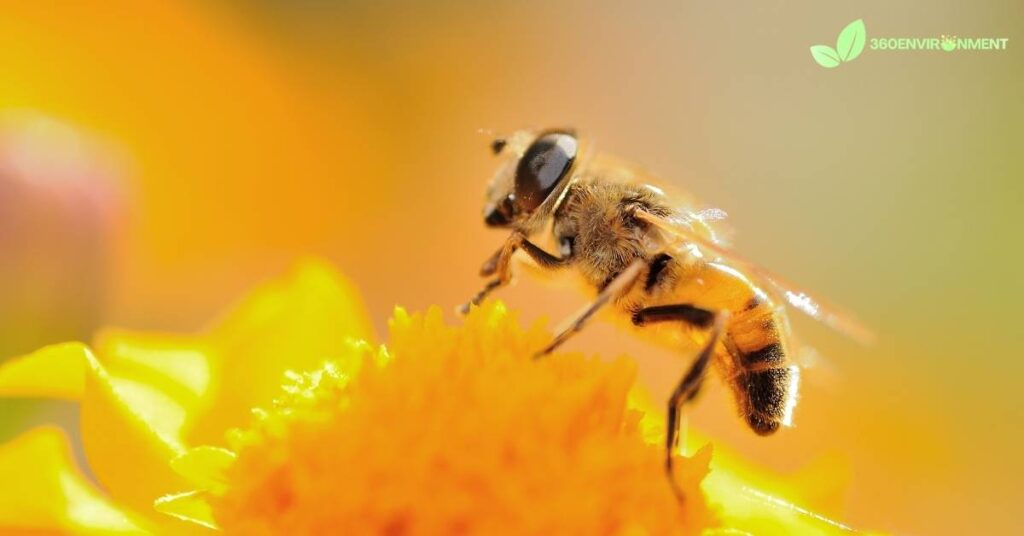
5.1. Creating Bee-Friendly Habitats
One of the most effective ways to support yellow bees is to create and protect bee-friendly habitats. Whether in rural, suburban, or urban areas, planting native flowers and providing nesting sites can help bees thrive.
- Pollinator Gardens: Planting a variety of native flowering plants that bloom throughout the growing season provides bees with a continuous food supply. Bees are attracted to brightly colored flowers, particularly those in shades of yellow, blue, and purple. Gardeners can also provide water sources, such as shallow dishes filled with pebbles and water, to help bees stay hydrated.
- Bee Hotels and Nesting Sites: For solitary bees like mason bees and leafcutter bees, providing artificial nesting sites, such as bee hotels, can help increase local bee populations. These structures mimic natural nesting sites, such as hollow stems or holes in wood, and provide a safe place for bees to lay their eggs.
5.2. Reducing Pesticide Use
Limiting the use of harmful pesticides is essential for protecting yellow bees and other pollinators. By adopting more sustainable farming and gardening practices, we can reduce the negative impacts of chemical use on bee populations.
- Organic Farming: Organic farming practices, which avoid the use of synthetic pesticides and fertilizers, can help create a healthier environment for bees. Organic farms tend to have higher biodiversity, providing bees with more food sources and nesting opportunities.
- Public Education: Raising awareness about the importance of bees and the threats they face is crucial for promoting bee conservation. Educational campaigns can encourage homeowners, farmers, and policymakers to adopt bee-friendly practices, such as reducing pesticide use and planting pollinator-friendly plants.
Conclusion: The Ecological Importance of Yellow Bees
Yellow bees play a vital role in pollinating plants, maintaining biodiversity, and supporting ecosystem health. Their contributions to agriculture and natural ecosystems are invaluable, yet they face significant threats from habitat loss, pesticide use, and climate change. By understanding the environmental niche of yellow bees and taking action to protect their habitats, we can help ensure that these essential pollinators continue to thrive for generations to come.
Through habitat restoration, the reduction of pesticide use, and public awareness campaigns, we can support yellow bee populations and the ecosystems that depend on them. By taking steps to protect bees, we not only safeguard their survival but also ensure the continued health and resilience of the ecosystems they support.

